Episode 198
What you’ll learn in this episode:
- How art history and jewelry history interact
- How Jan’s experience as a historian helped her write her first book, and what she learned from self-publishing
- Why sweetheart jewelry became popular during World War II, and why few people today know what it is
- How Jan draws on her theater background to connect with and educate museum goers
- How museum education and jewelry history developed into their own fields
About Jan Krulick-Belin
Jan Krulick-Belin, a museum and art consultant and art and jewelry historian, has more than forty years of experience at such institutions as the Corcoran Gallery of Art, Denver Art Museum, Beaumont (Texas) Art Museum, and Smithsonian Institution. Retired as director of education at the Phoenix Art Museum, she still works with museums, art organizations, and private collectors and served as guest curator at the Sylvia Plotkin Judaica Museum, Phoenix.
Additional Resources
- Facebook: www.facebook.com/JanKrulick
- Website: www.jankrulick.com
- Amazon: www.amazon.com/author/jankrulickbelin
- Twitter: @JanKrulickBooks
Photos:
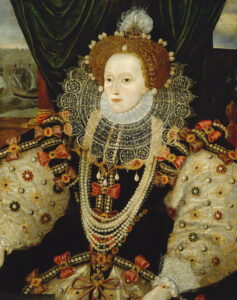
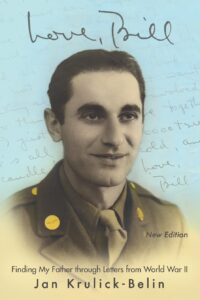
Cover of Jan’s book “Love, Bill”
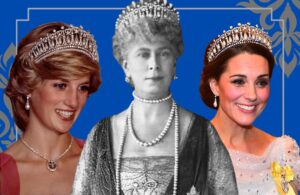
Royal Jewels archive
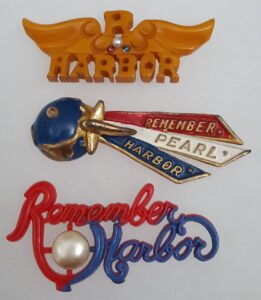
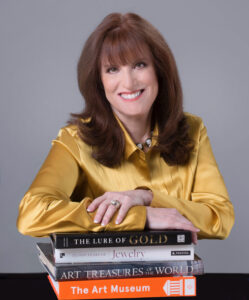
Transcript
As an art and jewelry historian and museum educator, Jan Krulick-Belin was uniquely qualified to follow the surprising journey she went on to write her first book, “Love, Bill: Finding my Father Through Letters from World War II.” Bringing together her knowledge of World War II-era culture and her research skills, writing the book was a labor of love. She joined the Jewelry Journey Podcast to talk about her tips for self-publishing; what sweetheart jewelry is and why it became so popular during World War II; and what it was like to be at the forefront of the museum education field. Read the episode transcript here.
Sharon: Hello, everyone. Welcome to the Jewelry Journey Podcast. This is the second part of a two-part episode. If you haven’t heard part one, please head to TheJewelryJourney.com.
One of the eternal questions is whether one has to be a jewelry historian to appreciate the background of jewelry. Do you have to be a jeweler to appreciate jewelry? My guest, Jan Krulick-Belin, can answer all our questions. Welcome back.
Jan: I’ve had people come up to me and show me stuff they’ve had, that their mothers or grandmothers or aunts had and left, and they didn’t know what it was. I said, “Well, that’s a piece of sweetheart jewelry.” They had no idea what it was. DUPLICATION OF END OF PART ONE.
Sharon: That’s interesting. Is it a more contemporary thing? Do they call it sweetheart jewelry?
Jan: It is still known as sweetheart. There are a handful of books that have been written. Off the top of my head, I can’t remember some of the authors, but there are not very many. I’ve seen people who will do lectures or write about jewelry from different periods of the 20th century. They will mention it during the 1940s. They will talk a little bit about sweetheart jewelry and jewelry made during the war.
In terms of writing books just on sweetheart jewelry, there are very few out there, but if you go to a bunch of different sources and learn about what was happening in the fashion world during the war, that will come up. You’ll learn about rationing and the War Bureau and all their rules and regulations. It was interesting that Marcus of Nieman Marcus was actually head of the War Production Board and came up with all these rationing roles for fashion. If you start delving into different areas, you’ll be able to pick up little bits and pieces and put it together.
Sharon: That’s interesting. People don’t know what it is. The other thing that interested me when I was reading about you was the fact that you were in only the third museum education class.
Jan: Yeah, I know. I feel ancient. I was in the class of 1978—that gives it all away, doesn’t it?—in grad school. It was the very first program of its kind in the country where you got a master’s degree in museum education. It was started by the professor I referred to, Dr. Marcella Brenner, who was an incredible woman. She was in the education field, but she married Morris Louis, who was an important abstract-expressionist artist. So, she was part of the art world, and she noticed that in museums, there was a lot of stuff going on that wasn’t very helpful to the general visitor.
Usually, people who developed materials or wrote the labels on the walls came from an academic or scholarly curatorial background. A lot of what they wrote was for their peers and the general public didn’t understand it. She felt that there needed to be a combination of people who are familiar with art—or whatever museum you’d go work in, because it was a multidisciplinary program, whether you worked in a science museum or a history museum. But the illness was the same no matter what museum you’d go to, and she felt it was important to teach people not just the background of the field and the type of museum they wanted to go into, but to understand how people learn in a museum setting and how to teach and how to communicate. She developed this program at George Washington University in the education department, and I was in the third graduating class of that program. We were newbies and the field was just forming.
I had a couple of mentors, one who I worked with in Denver and who I consider the first generation of museum educators. I’m stuck in the second generation of museum educators because we came along and solidified certain things within the field that really made it a field. My goal was to work with curators and other museum professionals, even designers, and help them understand how people go through a museum, understand what happens and how to communicate without patronizing. I think that’s the fine line. You don’t want to talk down to people. My goal is to teach people how to look, what to look at. We’re born to see, but we’re not born knowing how to look carefully or knowing what to look for or what to look at. I think that notion carries through into my art history as well as my jewelry history. It’s getting people to look and think based on what they see and getting them curious enough to go further with the information.
Sharon: Do you find that you teach adults differently in looking? If they have a piece of jewelry, does an adult look at it differently?
Jan: I think there’s definitely a difference between teaching adults and children, especially in a museum setting. Just as if you were a teacher of any subject, you’re either an elementary school teacher or not. I feel more comfortable talking to high schoolers or adults. I think adults like more information. As part of my jobs over the years, I was always in charge of training the docents or the volunteer guides to work with school groups or adult groups.
I can tell you in evaluations, I overheard a lot of things I would cringe at. When you’ve got a group of fifth graders and somebody’s sitting there lecturing nonstop about the history of X, Y, Z, and it was related to the surrealist movement, these kids don’t know that. You start with what they see. Describe what they’re looking at and ask, “What do you think this might be about?” or “How are you reacting to this?” I found, particularly in an art museum setting—and I think a little bit in the jewelry world too—quite often, if people don’t have the background, you have to start where people are. You have to very slowly give information and be very careful explaining any new terms.
One of my minors as an undergraduate was also theater, so when I worked with children in a museum setting, I incorporated a lot of theater. It wasn’t unusual for me. Everybody used to think it was unusual, crazy, whatever. I would teach whole art history classes in period costume. We created things we called art carts, which were trunks for the fashion and costume collection. In the Beaumont Museum, I had a huge armoire with things hanging in it and different samples of textiles so people could see and touch and feel. That’s the opening; being dramatic. When I was in Denver, I also got a big National Endowment for the Humanities grant to teach art history classes to kids in the galleries using real objects. Again, I conned a lot of my professor friends at Denver University to come in costume and teach as if they were a historical figure. I think adults like that too. I think they’re a little taken aback at first, but who doesn’t enjoy something like that? I think they all love theater a little bit.
As far as jewelry, I don’t know that I’ve ever worked with kids in talking about jewelry. It wasn’t part of what I was doing back then, and I haven’t worked with kids very much in the last 20 years or so. All of my teaching is with adults, but I think you have to start where they are, find out what they know. I think kids—and, believe me, a lot of adults; you’d be surprised—don’t have those hooks that some of us take for granted, like understanding the stories of the Bible or knowing basic history. All those things come into play when you’re talking about art history or jewelry history or any kind of history. People just don’t have that knowledge base anymore. You sometimes really have to start from the ground level and figure out what your audience knows and then go from there.
Sharon: From the jewelry history you have taught, from when you taught kids, would you say that boys say “Yuck” to a heart and a girl might be attracted?
Jan: Maybe. Again, I’ve never had that experience. Anytime you’re teaching any audience, you have to find the hook you think will make sense. We used to laugh when you’re working with kids in school because the grosser you can get, the better you get to the boys. It’s sort of the same thing. If you’re showing them a diamond brooch—and I’m pulling this out of thin air since I’ve never had to do this—you ask, “Where do you think these things come from?” and you can talk about how diamonds are formed. You can get excited and scientific about it in a simple way, then you can get them hooked. Or you say, “Do you know that men used to wear more jewelry than women?” You just go where you think you will grab them. That’s with any audience, but you have to think quick on your feet with kids to figure out what’s going to catch their attention. That’s why I used to use theater a lot, because they can’t ignore you when you’re dressed in a Victorian corset with a long dress and you’re talking about Victorian paintings or the wild west or cowboy art. You go with what you’ve got.
Sharon: What made you decide to go into this area? I would have been a little hesitant to go into such a new area.
Jan: It was interesting. As an art history major, when I graduated as an undergraduate, I wasn’t sure what I wanted to do next. I knew I didn’t want to pursue and get into the Ph.D. track. I’m more of a people person and not a lone researcher. I really didn’t know what my options were. I tried to apply for internships around the country at art museums. I always felt very comfortable growing up in New York City. Going into an art museum was something we did. I didn’t get any internships, except I did get one finally. It was an offer from the Smithsonian, but it was from the Department of Performing Arts. They noticed that I also had a theater degree, a minor. So, that’s how it started.
I was working for a wonderful woman who was really encouraging me. That was 1976, and it was the Festival of American Folklife on the Mall in D.C. It was big; it was a bicentennial year. This was normally a two-week folklife festival that happened every summer, but this was now all summer. We were talking, and she asked me, “What do you want to do?” and I said, “I have no idea once this is over.” She said, “Well, I know a couple of people who are starting this new graduate program over at GW, and it sounds like everything you’ve done. You were a camp counselor. You like to be around kids. You love theater. You love art. This sounds up your alley.”
I had no idea what museum education was, nor did most people, actually, and I wasn’t ready to go to grad school. Then, after a year of knocking around and not being able to find a decent job, I applied, and there you go. It’s funny how things happen. I don’t say it was an accident because maybe I was on a path. I know that was the path I was on, but it was just something new, and it fit. When I started looking into the program, it was just the right amount of time where I could finish a degree, and I was already living in Washington, D.C. at that point, so it was perfect.
Sharon: Based on all that and from everything you’ve told us, what is your favorite period of jewelry?
Jan: That’s a tough one. I’m an equal opportunity jewelry lover, everything from fine to vintage and costume. I do have a soft spot for Art Deco jewelry. I do like that, but coming from my background as a museum educator, I wasn’t supposed to specialize in one period because I had to work with every exhibition that came along. I had to be a fast study and cram. I had to be a good generalist, and I had to be knowledgeable enough so I could communicate with curators in their areas of specialty so they would respect my body of knowledge. I think I’ve always felt like I needed to be knowledgeable about every area.
I get to specialize when I do a particular lecture. That’s when I can do a deep dive: when I’m preparing a talk in a specific jewelry area. I like all different time periods for different reasons, but it’s probably the one I just finished researching.
Sharon: You wrote that if you have another book, you’ll be able to rectify the mistakes you made in the first one.
Jan: I didn’t know how you even begin writing a book and how you go about getting it published and all of that. I’ve learned a lot since then, believe me; the good, the bad and the ugly, and all the little things. I didn’t know you’re supposed to find the endorsements for the back of your book even before it goes to the designer, or even making decisions about what color paper or what font. I had to know all the practical sides of publishing and making a book happen strictly because I self-publish, but with a company I worked with to make it all happen. I didn’t know how important social media was, which I never wanted to get involved with. That was a lot of the learning curve.
I had to be more knowledgeable about how to go about picking the people to work with because I literally went in blind. I just didn’t know. I went to one conference locally when I thought about putting this into a book. I made notes, and fortunately I found a local lawyer who was a copyright attorney. He helped me deal with that. Now, I know all that stuff, which is probably a bad thing because I know enough that I don’t know if I want to go through this again. It’s hard. It’s really hard. I don’t care what people tell you. If you go with a traditional publisher, there are goods and bads. If you go with self-publishing, there are goods and bads. I always said, when things started happening, I just wanted to write a book; that’s all I wanted. I was like, “I’ve got to jump through these hurdles and hoops.”
I had a bad experience with the first publisher of my book, and it was very painful. Fortunately, now it’s back out there with a different publisher, but it was a hard lesson to learn when your publisher goes AWOL and takes all your digital files and scams you out of all your royalties for two years. It’s ugly. I’m not the only person this has ever happened to, I’m sure, but it kind of burns you. I think that’s why when people say, “Are you going to write a new book?” I was hesitant to answer. I just don’t know if after all that, I wanted to go through anything like that again. But hopefully I’ve learned. I know more people and I can reach out to more people to put me on a different path than what I went on last time.
Sharon: It sounds like a very interesting subject. I don’t know about writing a whole book.
Jan: You’re lucky.
Sharon: I’m anxious to read it. Besides the diamonds, do you have anything else rolling around? What else do you have?
Jan: I think the reason the book got written is because it was such an emotional, important, personal story. It was cathartic for me to go through this and work out the emotions I’ve had for my entire life, growing up without a father and knowing so little about who he was. When I finished that—I laugh because literally, the book wasn’t even hot off the press when people started asking, “What’s your next book?” It’s like, “Can I please enjoy this one? It’s taken five-and-a-half years out of my life, from not even thinking I’d write a book to getting it to the editor, thank you very much.” I always said if I wrote another one, the idea and the need to write it would have to be as gripping for me.
Like I said earlier, I knew with first book that I couldn’t stop my brain from racing at two in the morning. I would have these ideas, and these thoughts and sentences would pop into my head. I would have organizational ideas in the middle of the night and they wouldn’t let me go. So, that would have to happen if I’m going to write another book. It has to be needing to come out. I have to get excited about it and I have to be invested in it. I’m getting closer. It depends on what’s happening in my life.
I’m still lecturing and doing things like that, but I’ve done a bunch of research trips. I have a couple more planned than I probably need to do, just to fill in my head. The hard thing is I’m thinking of a jewelry historical fiction. I’m not a fiction writer. I’m a non-fiction writer. I’m a historian. Trying to figure out how I can blend the history side of me and the truths with a little bit of fiction and make it all work, that’s why I’m struggling so much moving past where I am right now. I’m not sure how to do this. I know a wonderful, exciting history about this particular diamond. I know who owned it from one point to the last point we know it existed. It’s filling in the before and the after and the middle. How do you do all that?
I haven’t had another idea that’s as compelling to me. I think this particular diamond has been on my mind since the very first jewelry history lecture I’ve ever written. I can’t let it go. It’s stuck to me and I can’t shake it off. That’s why, if it’s another book, it probably will have to be this one, because it’s the only thing I can’t shake off.
Sharon: It sounds very interesting. I want to thank you for being with us today. We really appreciate it.
Jan: My pleasure.
Sharon: We will have photos posted on the website. Please head to TheJewelryJourney.com to check them out.
Thank you again for listening. Please leave us a rating and review so we can help others start their own jewelry journey.

